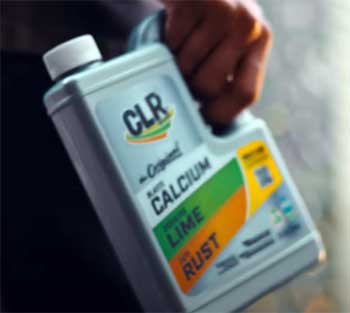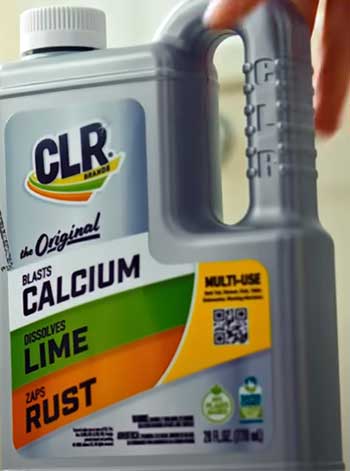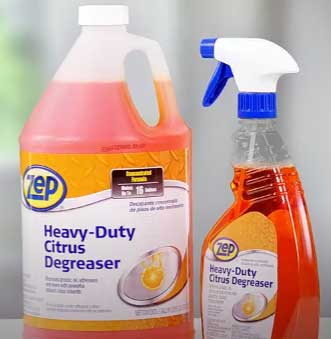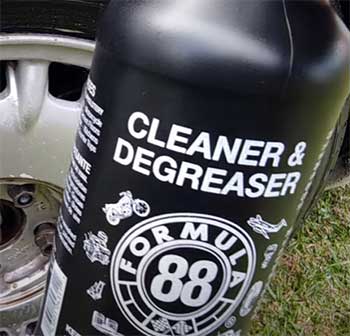When it comes to keeping your home spotless and free from stubborn deposits, finding the right cleaner can be a game-changer. That’s why I’m excited to introduce you to CLR Calcium, Lime, and Rust Remover.
It stands out in the market for its industrial strength, non-toxic formula, and incredible versatility. Whether you’re dealing with soap scum in the bathroom or hard water stains in the kitchen, CLR promises to make those tough cleaning tasks a breeze.
In this review, I’ll share my personal experience with CLR, compare it with other brands, and provide some handy tips for maintaining your surfaces. By the end of this article, you’ll see why CLR might just be the cleaner you’ve been searching for.
What Makes CLR Special?
Before diving into my detailed experience, let’s cover what CLR claims to offer:
- Industrial Strength: Designed to tackle tough stains on various surfaces.
- Non-Toxic Formula: Safe for use around kids and pets, containing no phosphates, ammonia, or bleach.
- Multi-Purpose: Effective on plastic, ceramic tile, glass, stainless steel, and more.
- EPA-Certified: Recognized as a safer alternative to traditional cleaners.
- Versatility: From coffee pots to washing machines, CLR handles it all.
My Experience With CLR
I’ve used CLR for several cleaning tasks around my home, and here’s a detailed breakdown of how it performed in different scenarios.
- Bathroom Cleaning
The first place I put CLR to the test was my bathroom. Hard water stains and soap scum are constant battles, especially on my shower doors and fixtures. Following the instructions, I applied CLR directly to the affected areas and let it sit for a few minutes.
With a bit of scrubbing, the results were impressive. The shower doors were sparkling, and the fixtures looked almost new. However, when it came to the toilet bowl, CLR didn’t completely remove the rust stains. It improved the situation but didn’t entirely solve it.
- Kitchen Surfaces

Next, I tried CLR on my kitchen sink and countertops, which often suffer from hard water deposits and soap residue.
The results were fantastic. CLR quickly cut through the grime, leaving a streak-free shine.
I also used it on some glassware that had become cloudy due to mineral buildup.
After soaking them in a CLR solution, they came out crystal clear.
- Outdoor Use
For an outdoor test, I used CLR on some rust stains on my concrete patio. I followed the directions closely, applying the product and then scrubbing with a stiff brush.
The results were mixed. While the rust stains lightened significantly, they didn’t disappear completely after the first application. A second application brought better results, but some traces of rust were still visible.
Pros and Cons of CLR Calcium, Lime, and Rust Remover
Pros
- Effective on Multiple Surfaces: One of the biggest advantages of CLR is its versatility. You can use it on a wide range of surfaces including glass, stainless steel, ceramic, porcelain, and even concrete. This makes it an all-in-one solution for various cleaning tasks around your home or office.
- Non-Toxic Formula: CLR stands out for its non-toxic formulation, which makes it safe to use around kids and pets. Unlike many other cleaners that contain harsh chemicals like ammonia or bleach, CLR is free from these substances. It’s also part of the EPA’s Safer Choice Program, which means it’s recognized as a safer alternative to traditional cleaning products.
- EPA-Certified: The certification from the Environmental Protection Agency adds a layer of credibility and trust. It ensures that CLR meets stringent safety and environmental standards, making it a responsible choice for eco-conscious consumers.
- Easy to Use: The application process for CLR is straightforward. Simply apply the product, let it sit for a few minutes, scrub if necessary, and rinse. The clear instructions make it user-friendly even for those who aren’t experienced with cleaning products.
- Multi-Purpose: CLR’s ability to tackle a variety of cleaning challenges is a significant plus. Whether you need to clean your kitchen sink, bathroom tiles, coffee pot, or even a commercial washing machine, CLR can handle it. This multi-purpose nature means you can reduce the number of cleaning products you need to buy and store.
Cons

- Limited Effectiveness on Some Stains: While CLR is highly effective on many types of stains, it does have its limitations. For very stubborn rust stains, you might find that CLR needs to be applied multiple times to achieve satisfactory results. In some cases, it may not remove the stain completely.
- Potential Need for Multiple Applications: For tougher jobs, one application of CLR might not be enough. You may need to repeat the process, which can be time-consuming. This is particularly true for areas with heavy calcium or lime buildup, where a single treatment might not suffice.
- Strong Smell: Although CLR is non-toxic, it does have a noticeable chemical odor. While it’s not overwhelming, it’s something to be aware of, especially if you are sensitive to smells. Ensure good ventilation when using the product to mitigate this issue.
- Not Suitable for All Surfaces: CLR should not be used on certain materials like natural stone (e.g., marble or granite), colored grout, painted surfaces, or any surface not recommended by the manufacturer. This limitation means you need to be cautious and test the product on a small area first to avoid damage.
- Requires Proper Handling: Despite being non-toxic, it’s still advisable to use gloves when handling CLR, especially for prolonged use. This adds a layer of inconvenience for those who prefer a completely hassle-free cleaning process.
Comparison With Other Brands
To give you a complete picture, let’s compare CLR with some other popular cleaners like Lime-A-Way and Barkeeper’s Friend.
- CLR Vs. Lime-A-Way
Both products are designed to tackle similar issues, but there are some differences. Lime-A-Way is particularly effective on lime deposits and often requires less scrubbing.
However, CLR’s non-toxic formula and multi-surface capabilities give it an edge for those looking for a more versatile cleaner. Lime-A-Way also tends to have a stronger chemical smell, which might be a downside for some users.
- CLR Vs. Barkeeper’s Friend
Barkeeper’s Friend is another excellent cleaner, especially for stainless steel and porcelain. It works wonders on cookware and kitchen appliances.
However, it requires more elbow grease compared to CLR, which can be a deal-breaker if you prefer a less labor-intensive cleaning process. Barkeeper’s Friend also contains oxalic acid, which can be harsher on the skin and surfaces.
Tips For Using CLR Calcium, Lime, And Rust Remover
Using CLR effectively is key to maintaining your surfaces and prolonging their lifespan. Here are some tips based on my experience:
- Follow Instructions: Always adhere to the recommended application times and dilution ratios.
- Use Protective Gear: Wear gloves to protect your skin, especially for prolonged use.
- Test on a Small Area: Before applying CLR to a large surface, test it on a small, inconspicuous area.
- Rinse Thoroughly: Ensure you rinse surfaces well after cleaning to remove any residue.
- Regular Cleaning: For best results, incorporate CLR into your regular cleaning routine to prevent buildup.
Frequently Asked Questions (FAQ)
Yes, CLR is effective at removing rust, especially on surfaces like stainless steel, porcelain, and concrete. However, for very stubborn rust stains, you might need to apply it more than once and do some scrubbing.
CLR should not be used on natural stones like marble or granite, colored grout, painted surfaces, or any surfaces that are not recommended by the manufacturer. Always test on a small area first to ensure compatibility.
Leaving CLR on surfaces for too long can cause damage, especially to more delicate materials. It’s essential to follow the instructions and not exceed the recommended contact time, usually two minutes for most applications.
The best remover depends on your specific needs. CLR is excellent for its non-toxic formula and versatility. Lime-A-Way is highly effective on lime deposits, while Barkeeper’s Friend excels on stainless steel and porcelain. Each product has its strengths, so choose the one that best fits your cleaning challenges.
Final Thoughts
After using CLR Calcium, Lime, and Rust Remover for various cleaning tasks, I can confidently say it’s a valuable addition to any cleaning arsenal. Its versatility, non-toxic formula, and effectiveness on multiple surfaces make it a standout product.
While it may not be perfect for every single stain, its benefits far outweigh the minor drawbacks. Whether you’re tackling hard water stains in the kitchen or rust on your patio, CLR is a reliable choice. Give it a try, and you might just find it becomes your go-to cleaner.


